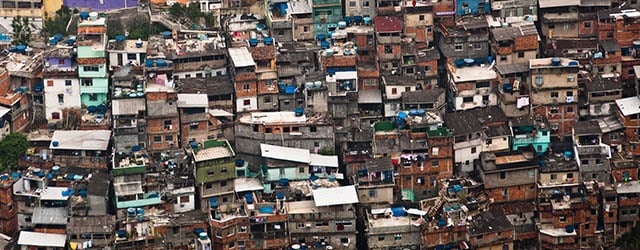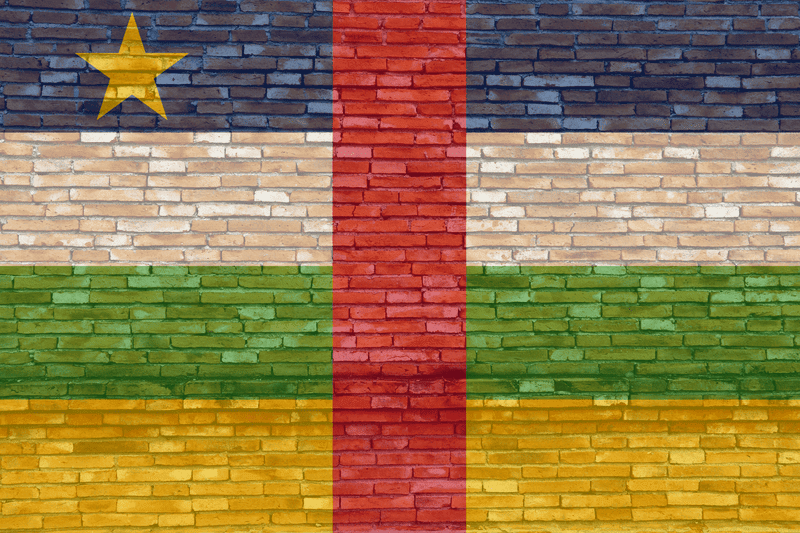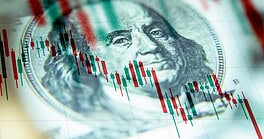2015 Rankings are based on the GDP (PPP) of a country, which compares the generalized differences in the cost of living and standards between countries.

INTRODUCTION
Overall, there are two standard methods of measuring the wealth of countries and how rich or poor its inhabitants are. The measure most often used is Gross Domestic Product (GDP), which represents the size of a country’s economy. A refinement of this is per-capita GDP, which is a measure of the average welfare and affluence, or poverty, of residents of a country. However, GDP and per-capita GDP are less useful when comparing economies across national boundaries – which one must do to determine the poorest countries in the world – because GDP is expressed in a country’s local currency.
The measure that most economists prefer is, and the one used here, GDP at purchasing power parity. GDP (PPP) compares generalized differences in living standards on the whole between nations because PPP takes into account the relative cost of living and the inflation rates of countries, rather than using just exchange rates, which may distort the real differences in income.
Values are expressed in current international dollars, reflecting a single year’s (the current year) currency exchange rates and PPP adjustments.

THE 10 POOREST COUNTRIESIN THE WORLD
#10 | MADAGASCAR

Current International Dollars: 1,477.78
Long running political strife and poor governance have undermined this country’s economy and standards of living. In 2015, the IMF estimates that Madagascar’s per-capita GDP (PPP) is less than US$1,500, the tenth lowest in the world. With the political situation stabilizing recently, a new reform plan taking effect and expanding activity in the agricultural, tourism and extractive industries, there is some moderate optimism about this economy going forward.


CLICK HERE TO SEE THE POOREST COUNTRIES IN THE WORLD
#9 | GUINEA

Current International Dollars: 1,388.74
The Ebola epidemic of 2014 ravaged this country and its economy, adding to years of political instability and dwindling growth. Guinea therefore remains one of the poorest nations in the world, with a per-capita GDP (PPP) estimated at less than US $1,400 in 2015.


CLICK HERE TO SEE THE POOREST COUNTRIES IN THE WORLD
#8 | ERITREA

Current International Dollars: 1,210.15
Despite a promising mining sector, Eritrea suffers the consequences of having one of the most repressive governments in the world: among other things it faces UN sanctions and must deal with thousands of citizens fleeing the country every month. Poverty is widespread and income per-capita (PPP) in 2015 is estimated at just over US $1,200.


CLICK HERE TO SEE THE POOREST COUNTRIES IN THE WORLD
#7 | MOZAMBIQUE

Current International Dollars: 1,208.61
Mozambique has enjoyed robust economic growth over the last decade or so, a trend that could be further strengthened by the development of a promising extracting industry. However, that growth has only marginally translated into poverty reduction and rural poverty especially remains profound. Per-capita GDP (PPP) in Mozambique in 2015 was estimated by the IMF to be just less than US $1,210.


CLICK HERE TO SEE THE POOREST COUNTRIES IN THE WORLD
#6 | NIGER

Current International Dollars: 1,069.59
Extractive industries have been contributing to economic growth in recent years, but Niger continues to contend with political instability, institutional fragility and reliance on donor financing. Per-capita GDP (PPP) in 2015 was estimated at US $1,070.


CLICK HERE TO SEE THE POOREST COUNTRIES IN THE WORLD
#5 | BURUNDI

Current International Dollars: 951.098
A recent rekindling of political instability is threatening any economic and institutional progress made in this country still plagued by rampant corruption, widespread poverty and low levels of development. In 2015, the IMF estimates that Burundi’s per-capita income (PPP) at US $951.


CLICK HERE TO SEE THE POOREST COUNTRIES IN THE WORLD
#4 | LIBERIA

Current International Dollars: 934.095
Liberia is still suffering the remnants of a twenty-year old civil war and its economy remains fragile, though it has been on the upswing in recent months. Widespread poverty, illiteracy and corruption contribute to keeping standards of living low, with a per capita income (PPP) estimated at US $935 in 2015.


CLICK HERE TO SEE THE POOREST COUNTRIES IN THE WORLD
#3 | MALAWI

Current International Dollars: 819.688
Malawi’s economy has been improving in recent years but persistently high inflation and heavy reliance on donor financing are among the factors that hinder a more widespread and sustainable improvement of standards of living. Per-capita GDP (PPP) in 2015 was estimated at US $820.


CLICK HERE TO SEE THE POOREST COUNTRIES IN THE WORLD
#2 | DEMOCRATIC REPUBLIC OF THE CONGO

Current International Dollars: 753.907
Long-running conflicts continue to prevent political, institutional and economic development in this country, where income per-capita (PPP) is tragically low at an estimated US $750 in 2015..


CLICK HERE TO SEE THE POOREST COUNTRIES IN THE WORLD
#1 | CENTRAL AFRICAN REPUBLIC

Current International Dollars: 639.937
The Central African Republic’s is among the world’s least developed countries, plagued by years of sectarian violence, political mismanagement, corruption and resulting widespread poverty. Per-capita income (PPP) in 2015 was estimated to be the lowest in the world, at US $640.

CLICK HERE TO SEE THE POOREST COUNTRIES IN THE WORLD
Gross domestic product (GDP) based on purchasing-power-parity (PPP) per capita.
Values are expressed in current international dollars, reflecting a single year’s (the current year) currency exchange rates and PPP adjustments.
Ranking | Country | 2015 International Dollars |
|---|---|---|
1 | Central African Republic | 639.937 |
2 | Congo, Dem. Rep. | 753.907 |
3 | Malawi | 819.688 |
4 | Liberia | 934.095 |
5 | Burundi | 951.098 |
6 | Niger | 1,069.59 |
7 | Mozambique | 1,208.61 |
8 | Eritrea | 1,210.15 |
9 | Guinea | 1,388.74 |
10 | Madagascar | 1,477.78 |
11 | Guinea-Bissau | 1,491.19 |
12 | Togo | 1,525.64 |
13 | Mali | 1,614.10 |
14 | Kiribati | 1,640.76 |
15 | Ethiopia | 1,656.44 |
16 | Comoros | 1,735.13 |
17 | Rwanda | 1,782.46 |
18 | Burkina Faso | 1,824.62 |
19 | Uganda | 1,836.02 |
20 | Haiti | 1,846.12 |
21 | Gambia | 1,849.99 |
22 | Solomon Islands | 1,877.21 |
23 | Benin | 1,957.78 |
24 | Afghanistan | 2,051.05 |
25 | Tanzania | 2,054.32 |
26 | Zimbabwe | 2,106.83 |
27 | Sierra Leone | 2,284.06 |
28 | South Sudan | 2,374.36 |
29 | Senegal | 2,398.26 |
30 | Nepal | 2,516.94 |
31 | Vanuatu | 2,609.13 |
32 | Chad | 2,805.09 |
33 | Tajikistan | 2,830.14 |
34 | Papua New Guinea | 2,856.67 |
35 | Côte D’Ivoire | 3,096.65 |
36 | Lesotho | 3,110.64 |
37 | Cameroon | 3,116.66 |
38 | Djibouti | 3,181.68 |
39 | Micronesia, Federated States Of | 3,285.14 |
40 | Marshall Islands | 3,292.47 |
41 | Kenya | 3,304.48 |
42 | Sao Tome And Principe | 3,306.66 |
43 | Cambodia | 3,533.63 |
44 | Kyrgyz Republic | 3,581.33 |
45 | Mauritania | 3,587.92 |
46 | Bangladesh | 3,631.19 |
47 | Yemen | 3,992.87 |
48 | Ghana | 4,338.27 |
49 | Zambia | 4,345.33 |
50 | Sudan | 4,655.06 |
51 | Honduras | 4,849.30 |
52 | Pakistan | 4,943.26 |
53 | Nicaragua | 5,018.76 |
54 | Moldova | 5,091.05 |
55 | Myanmar | 5,207.68 |
56 | Tonga | 5,274.12 |
57 | Samoa | 5,355.84 |
58 | Lao People’S Democratic Republic | 5,357.17 |
59 | Uzbekistan | 5,963.77 |
60 | Viet Nam | 5,983.24 |
61 | India | 6,176.29 |
62 | Nigeria | 6,467.23 |
63 | Bolivia | 6,530.17 |
64 | Cape Verde | 6,569.82 |
65 | Congo, Rep. | 7,038.16 |
66 | Guyana | 7,279.77 |
67 | Timor Leste | 7,388.46 |
68 | Philippines | 7,412.24 |
69 | Guatemala | 7,704.20 |
70 | Armenia | 7,748.05 |
71 | Swaziland | 8,053.70 |
72 | Morocco | 8,097.23 |
73 | Georgia | 8,222.77 |
74 | Bhutan | 8,252.83 |
75 | El Salvador | 8,275.84 |
76 | Belize | 8,338.99 |
77 | Ukraine | 8,493.56 |
78 | Fiji | 8,553.95 |
79 | Angola | 8,573.33 |
80 | Paraguay | 8,776.30 |
81 | Jamaica | 8,941.65 |
82 | Bosnia And Herzegovina | 10,359.60 |
83 | Indonesia | 10,759.18 |
84 | Dominica | 11,029.40 |
85 | Mongolia | 11,051.67 |
86 | Sri Lanka | 11,155.84 |
87 | Namibia | 11,361.12 |
88 | Saint Vincent And The Grenadines | 11,380.20 |
89 | Saint Lucia | 11,432.50 |
90 | Egypt, Arab Republic | 11,443.89 |
91 | Albania | 11,688.93 |
92 | Ecuador | 11,839.19 |
93 | Tunisia | 11,896.99 |
94 | Grenada | 12,091.83 |
95 | Jordan | 12,397.90 |
96 | Peru | 12,638.84 |
97 | Serbia | 12,971.49 |
98 | Maldives | 12,987.71 |
99 | South Africa | 13,078.00 |
100 | Dominican Republic | 13,347.97 |
101 | Iraq | 13,817.09 |
102 | Macedonia, FYR | 13,901.13 |
103 | China | 13,992.69 |
104 | Colombia | 14,164.43 |
105 | Algeria | 14,802.35 |
106 | Thailand | 15,319.51 |
107 | Brazil | 15,518.77 |
108 | Costa Rica | 15,534.03 |
109 | Turkmenistan | 15,837.26 |
110 | Palau | 15,839.60 |
111 | Montenegro | 15,996.01 |
112 | Barbados | 16,500.31 |
113 | Botswana | 16,758.31 |
114 | Iran, Islamic Republic Of | 16,918.28 |
115 | Suriname | 17,502.96 |
116 | Venezuela, Bolivarian Republic Of | 17,787.39 |
117 | Bulgaria | 17,869.22 |
118 | Lebanon | 18,358.02 |
119 | Mexico | 18,714.05 |
120 | Mauritius | 18,836.44 |
121 | Belarus | 18,882.48 |
122 | Azerbaijan | 18,913.51 |
123 | Libyan Arab Jamahiriya | 19,182.46 |
124 | Turkey | 20,299.39 |
125 | Romania | 20,355.72 |
126 | Croatia | 20,873.01 |
127 | Saint Kitts And Nevis | 21,073.34 |
128 | Uruguay | 21,387.31 |
129 | Panama | 21,634.56 |
130 | Argentina | 21,924.29 |
131 | Gabon | 22,878.98 |
132 | Antigua And Barbuda | 23,071.33 |
133 | Chile | 24,170.03 |
134 | Latvia | 25,195.47 |
135 | Russian Federation | 25,350.86 |
136 | Kazakhstan | 25,367.27 |
137 | Hungary | 25,406.32 |
138 | Seychelles | 25,624.02 |
139 | Poland | 25,703.48 |
140 | Bahamas | 25,793.62 |
141 | Malaysia | 25,833.20 |
142 | Greece | 27,008.05 |
143 | Portugal | 27,180.22 |
144 | Estonia | 27,729.44 |
145 | Lithuania | 28,245.32 |
146 | Cyprus | 28,329.38 |
147 | Slovak Republic | 28,887.72 |
148 | Czech Republic | 29,658.73 |
149 | Equatorial Guinea | 29,735.42 |
150 | Slovenia | 30,266.44 |
151 | Trinidad And Tobago | 32,346.41 |
152 | Malta | 32,977.12 |
153 | Israel | 34,162.24 |
154 | Spain | 34,228.87 |
155 | Italy | 35,228.02 |
156 | New Zealand | 36,342.72 |
157 | Korea, Republic Of | 37,413.01 |
158 | Japan | 38,797.39 |
159 | United Kingdom | 39,224.92 |
160 | Finland | 41,393.81 |
161 | France | 41,396.01 |
162 | Belgium | 42,923.15 |
163 | Iceland | 44,575.14 |
164 | Oman | 44,903.66 |
165 | Denmark | 45,800.36 |
166 | Canada | 45,981.99 |
167 | Taiwan | 45,996.57 |
168 | Germany | 46,165.86 |
169 | Sweden | 46,386.42 |
170 | Austria | 46,906.12 |
171 | Australia | 48,288.43 |
172 | Ireland | 48,786.91 |
173 | Netherlands | 48,797.89 |
174 | Bahrain | 52,830.01 |
175 | Saudi Arabia | 56,253.43 |
176 | Switzerland | 56,815.63 |
177 | United States | 57,045.46 |
178 | Hong Kong | 57,676.79 |
179 | United Arab Emirates | 67,201.88 |
180 | Norway | 67,619.10 |
181 | Kuwait | 71,600.96 |
182 | Brunei Darussalam | 80,335.27 |
183 | Singapore | 84,821.40 |
184 | Luxembourg | 94,167.01 |
185 | Qatar | 146,011.85 |



